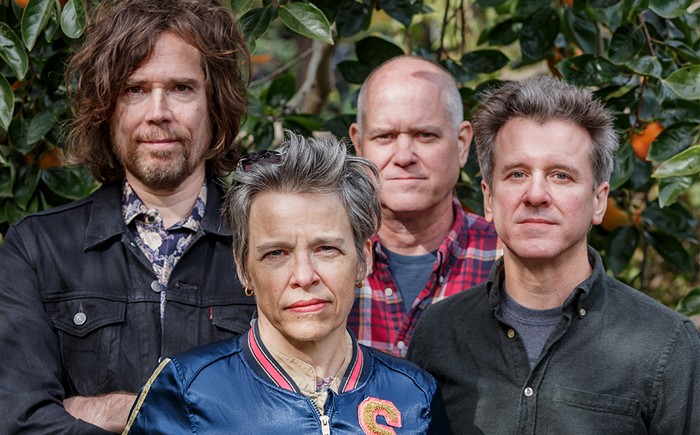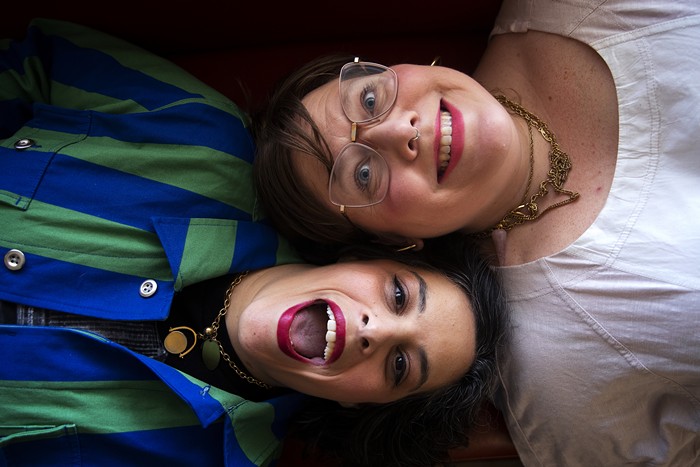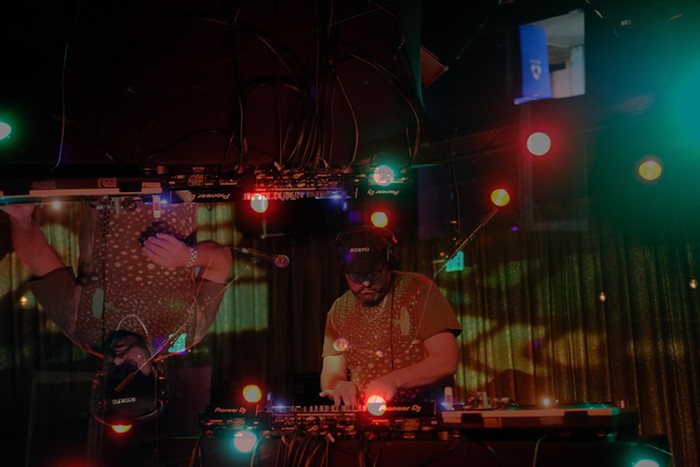
Krafft's Disasterware series made it to the big time. Major collectors bought his ceramic plates "commemorating both natural disasters, like earthquakes and floods, and political ones, like the Bombing of Dresden and the explosion of the Hindenburg," to use the words of the New Yorker. Indeed, one of his ceramic works promoted a feature I wrote for this paper way back in 2000, "How Tacoma Fought Seattle for the Future and Lost." (I was a young lecturer at Pacific Lutheran University at the time, and I wrongly thought I had some dirt on the City of Destiny.)
I knew Krafft personally. We moved in similar circles, and the thoughts I had of him during this time concerned his quirkiness. He walked kind of funny—a kind of over-lumbering gait. His glasses were a bit much. And he always talked like a guru. At one point, around 2003, we even did something quite forgettable together at the short-lived Capitol Hill Arts Center. But shortly after Obama was elected in 2008, Krafft got really weird.
One example among many: Whenever I posted on Facebook a quote by a writer who has exerted the greatest influence on my work on the Slog, Walter Benjamin, Krafft would, in the comments, pull something out of the air about Benjamin being a Jew. As time went on, the substance of these comments moved from being Delphic to being directly antisemitic. Then in 2013, the Stranger's art critic, Jen Graves, dropped the bomb in a feature with the appropriately long title: "Charles Krafft Is a White Nationalist Who Believes the Holocaust Is a Deliberately Exaggerated Myth: What Will Happen to One of the Northwest's Preeminent Artists—Whose Nazi Imagery Has Always Been Considered Ironic—Now That His Views Are Not a Secret?"
In Jen Graves's own words:
In 2009, I included his daintily painted ceramic AK 47 on a list of the 25 best works of art ever made in Seattle, and called him "the Northwest's best iconoclast." AK 47 is part of Krafft's Disasterware series, injecting the homey crafts of European ceramic painting with violence and catastrophic events. At the time of its creation, pretty much everyone thought Krafft was being ironic—poking holes in the fascist and totalitarian ideologies of the 20th century. He said as much in an interview in Salon in 2002. "For some reason, art has to be this earnest, serious, even Freudian, exploration," he told Salon. "But it doesn't necessarily have to be that at all. Art that's funny seems to get dismissed just because it is funny. But I've always had a knack and a penchant for going toward humorous irony."Now, a decade later, some of Krafft's more than 2,000 Facebook friends would be hard-pressed to detect humor in his increasingly sinister posts. On January 14, for instance, Krafft posted, "Why amongst the monuments glorifying the history of this nation in Wash DC is there a museum of horrors dedicated to people who never lived, fought, or died here? The USHMM [United States Holocaust Memorial Museum] was erected before there was ever a monument to the 465,000 Americans who died in WWII. And no one did enough to save the Jews of Europe?"
The story went national and Krafft's standing in the art world crashed almost immediately. This was his untergang. "Charles Krafft and the Conundrum of Nazi Art," wrote the art critic for the New Yorker, Rachel Arons. From that year to his death from glioblastoma brain cancer on June 12, 2020, Krafft was totally canceled. And rightly so. And the last major mention of him was in the Stranger's 2017 feature "We Snuck into Seattle's Super Secret White Nationalist Convention," by David Lewis. "What cred [Krafft] lost in the art community," wrote Lewis, "he has more than recovered among white nationalists. He has become a staple at Northwest Forum, known for holding before-parties at his house, which he rents from a Chinese-American landlord."
The composer of the comprehensive obituary on his official website claimed he was neither a neo-nazi nor a white supremacist.
Speaking of his Beacon Hill home. My last encounters with Krafft, who in 2017 briefly used an image of me for his profile photo on Facebook, would occur during my Sunday and Saturday walks through the neighborhood. He too was a bit of a walker. So, all of a sudden, I'd see Krafft approaching me on the sidewalk and realize there was no way of avoiding passing him. He still had that funny gait of his. And I knew he noticed me noticing him notice me. We would pass each other without exchanging a word. How in the world did this former hippy and follower of higher Indian wisdom become the person convincingly described as a white nationalist by Jen Graves and the arts community? This I can't answer. But I have a feeling I know why he didn’t make the list of cultural figures mourned by Seattle-area community members. Krafft was 72 when he met his end.




















